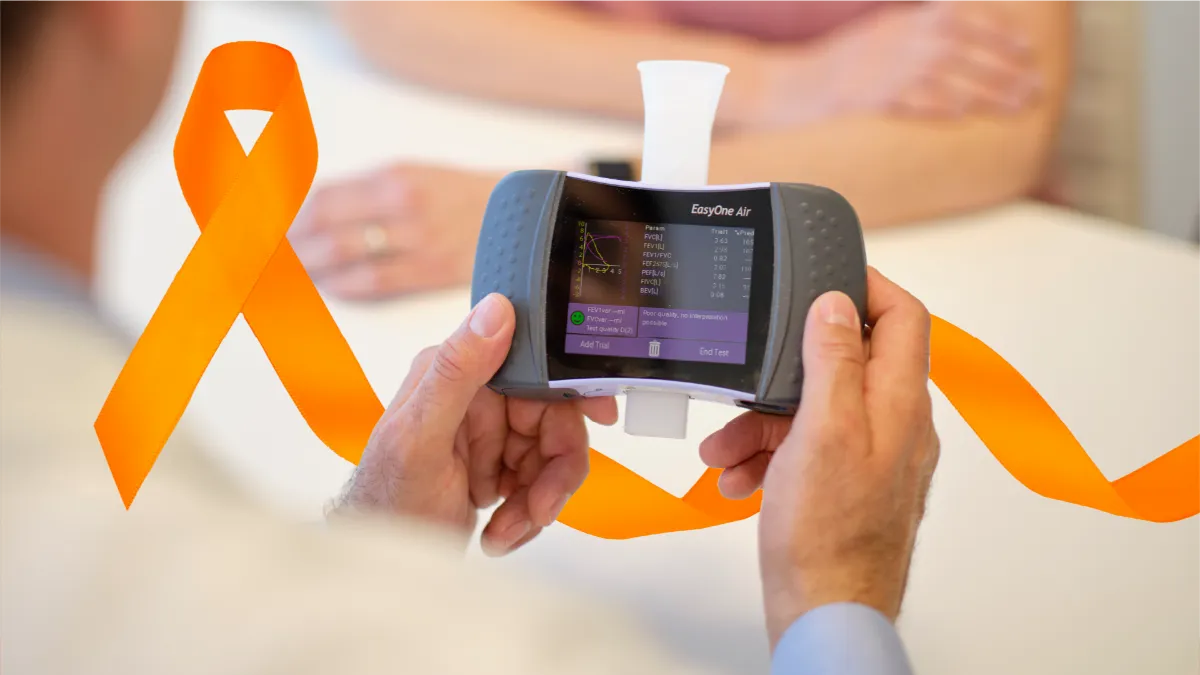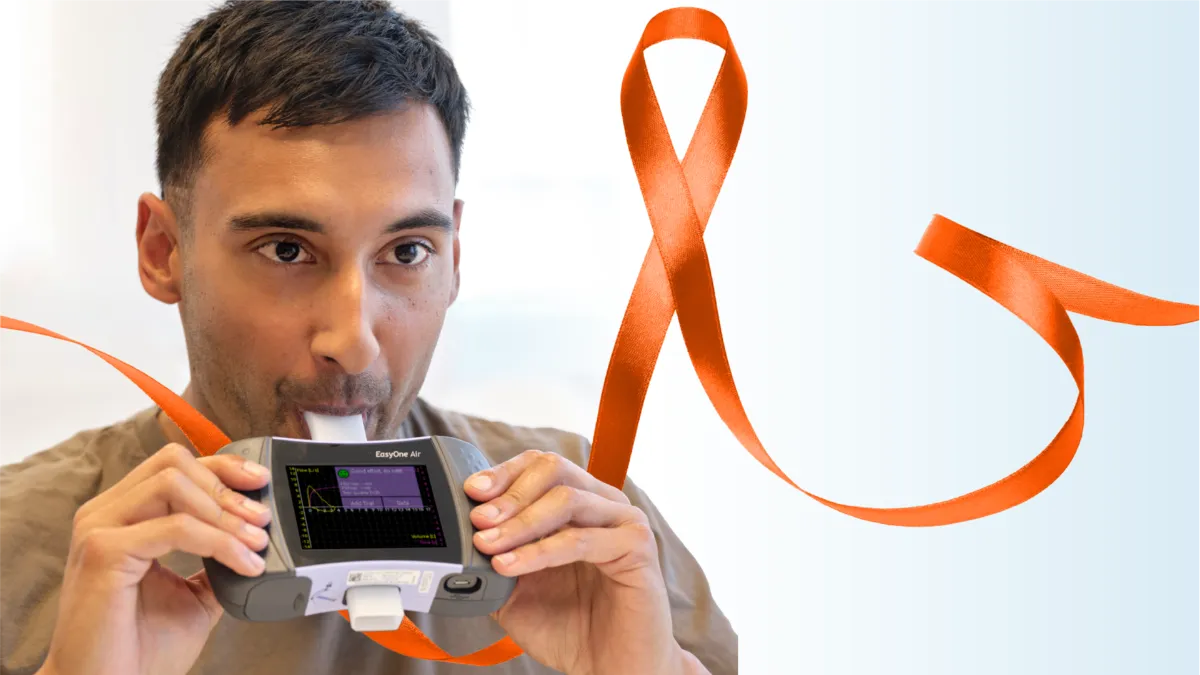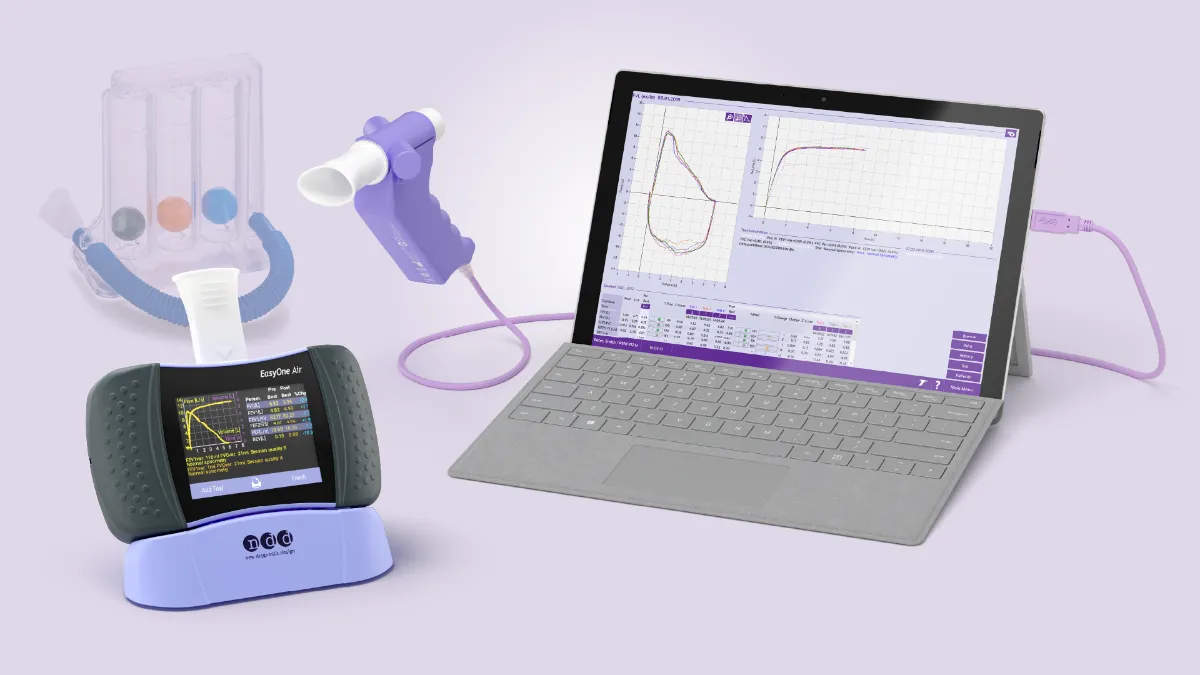Living with COPD: Strategies for managing symptoms, improving quality of life, and promoting lung health – part 1

November is Chronic Obstructive Pulmonary Disease (COPD) Awareness month. COPD is a pulmonary disease characterized by shortness of breath, cough, lung abnormalities, and airway obstruction. COPD can be caused by various factors, including but not limited to cigarette smoking, air pollution, biomass exposure, and abnormal lung development. It is the third leading cause of death worldwide, causing 3.23 million deaths in 2019. Its prevalence is expected to increase in coming years. The condition has a profound effect on individuals both physically and mentally, with 43.5% of those with COPD reporting anxiety or depression a rate more than 2 times greater than those without COPD.
In 2020, despite approximately 5% of Americans being affected by the condition, COPD received the 175th most amount of money from the National Institutes of Health. Due to its prevalence, impact, and comparably low amount of research funding, COPD Awareness Month is especially important. In this blog, we’ll highlight many components of COPD: Symptoms, preventing complications, improving quality of life, future COPD treatment, and more.
This is a two-part series. Read part two here.
Understanding COPD symptoms #
One of the two main goals of COPD management is first treating symptoms due in large part to the negative quality of life impact symptoms have on individuals with the condition.1 Chronic obstructive pulmonary disease (COPD) is characterized by a broad array of respiratory symptoms, most of which are not specific to the condition.2 These symptoms include shortness of breath (medically known as dyspnea), cough (with or without sputum production), airflow obstruction, wheezing and chest tightness, and fatigue.2
COPD, however, is not a homogeneous disease where every person with the condition will experience the same clinical presentation and progression. Chronic cough is often the first symptom of COPD.2 GOLD reports that chronic cough is often discounted by individuals as an inevitability due to smoking or environmental exposures;2 this, however, can delay an official diagnosis, potentially contributing to poorer outcomes for individuals. It’s crucial that any onset of — or change in — respiratory symptoms are not dismissed and are evaluated by a medical professional.
Patients also don’t necessarily feel the same as each other when they experience symptoms: Some patients report dyspnea as feeling like it requires an increased effort to breathe, others report air hunger and gasping, and still others describe a chest heaviness.3 Shortness of breath is a complex biological phenomenon, which may describe the varied way patients describe the sensation.
Spirometry is required to confirm a COPD diagnosis, which is why it’s particularly important for people experiencing onset of any respiratory symptoms, especially those of whom are exposed to risk factors (e.g, smoking or environmental pollution exposure), to seek medical attention for evaluation.
Symptom onset usually begins mildly, but unfortunately symptoms tend to worsen over time, though the decline can be slowed with early diagnosis and adequate care. Individuals themselves even experience fluctuations in their experience, with symptoms varying day-to-day. Symptoms are not always consistent or marked by clear progression with one followed by another. Wheezing and chest tightness are common, but their presence does not confirm a COPD diagnosis, nor does their absence in the presence of a chronic cough or shortness of breath exclude a COPD diagnosis.
Causes and risk factors #
Causes
Every year, GOLD releases revised guidelines for the diagnosis, treatment, and management of COPD. Earlier this year, GOLD released the 2023 GOLD Report, which amongst many updates, redefined COPD to shift the paradigm of thinking around COPD. The reshaped definition acknowledges the previous thinking that COPD is ultimately a condition whereby patients have lung abnormalities with airflow obstruction with the additional consideration of the different causes and biological mechanisms.4 The added benefit of the revised definition is that it provides the medical and research communities with a wider scope to identify, prevent, and the treat the condition earlier in its progression, before more significant damage can be done. Historically, COPD has been mostly associated with cigarette smoking; GOLD’s newly proposed taxonomy expands with the inclusion of several more subtypes (“etiotypes”):2
- Genetically determined COPD (COPD-G)
- COPD due to abnormal lung development (COPD-D)
- Environmental COPD
- Cigarette smoking COPD (COPD-C)
- Biomass and pollution exposure COPD (COPD-P)
- COPD due to infections (COPD-I)
- COPD & asthma (COPD-A)
- COPD of unknown cause (COPD-U)
GOLD acknowledges that this newly proposed taxonomy does not dramatically alter clinical practice and is subject to change as more evidence arises.2
Risk Factors
COPD typically arises from prolonged exposure to one more of risk factors which can be either or both genetic and environmental, a concept called GETomics (gene-environment interactions over the lifetime).2 As the above taxonomy indicates, common COPD risk factors include genetic factors, cigarette smoking, exposure to noxious particles and gases from household and outdoor air pollution, abnormal lung development, and even asthma and infections.
Diagnosis, staging, and the importance of an early diagnosis #
Diagnosis
The presence of respiratory symptoms are not necessarily required for a clinical definition of COPD. A clinical diagnosis for COPD is confirmed through spirometry, a type of pulmonary function test, by ascertaining the presence of non-fully reversible airflow limitation. More specifically, this is determined by a ratio of forced expiratory volume in the first second (FEV1) over forced vital capacity (FVC) of less than 0.7.
It is possible that somebody can have respiratory symptoms and even structural or physiological lung abnormalities and not technically receive a diagnosis of COPD if the individual’s FEV1/FVC ratio is greater than 0.7.2 In the event this occurs, these individuals can be labeled ‘Pre-COPD’ and maybut not necessarily develop clinically-confirmed COPD over time.2 Still, continued monitoring is recommended and these individuals are recommended to cease smoking if they smoke.
Staging
In the past, there were COPD “stages” ranging from mild to very severe. These used to be based on FEV1 alone. This paradigm has changed in recent years to incorporate a broader range of factors, including patient-reported outcomes and exacerbation history, in assessing individuals and guide pharmacologic treatment. In 2023, GOLD unveiled an updated assessment strategy known as the ABE Assessment Tool.2 Upon a confirmed diagnosis, physicians will evaluate the grade of airflow obstruction, ranging from grade GOLD 1 (greater than or equal to 80% FEV1 percent predicted) to grade GOLD 4 (less than 30% FEV1 percent predicted).
The next part of the assessment process incorporates patient-reported outcome assessments and exacerbation history (which is predictive of exacerbation risk).2 The first of the two outcome assessments is the modified Medical Research Council (mMRC) dyspnea scale, which is predictive of future mortality risk. The second assessment, recommended due to COPD clinical manifestation including more than only shortness of breath, is the COPD Assessment Tool (CAT™), an 8-item comprehensive patient-reported outcome assessment extensively documented in the literature as an effective tool.
Depending on the degree of airflow obstruction, outcome assessments, and exacerbation risk, patients can begin one of three treatment regimens, with A being the least intensive and E being the most, as it consists of two to three therapies.2
The importance of early diagnosis
Early diagnosis of COPD is challenging to define, in part because COPD’s diagnostic criteria —and therefore the typical threshold for initiating pharmacological treatment — requires spirometry to confirm. And since COPD symptoms are so heterogeneous and varied and it’s possible for people to have an impaired FEV1/FVC ratio before experiencing symptoms, constituting “early” has proven to be difficult. Multiple studies, however, have tried to at least better understand how the timing of a COPD diagnosis affects long-term outcomes. In multiple studies, regardless of the definition of “early” or “late” diagnosis, the evidence has shown time and time again that the earlier an individual is diagnosed in the biological progression of COPD, the better their outcomes have been.
Vogelmeier CF, Román-Rodríguez M, Singh D, Han MK, Rodríguez-Roisin R, Ferguson GT. Goals of COPD treatment: Focus on symptoms and exacerbations. Respir Med. 2020;166. doi:10.1016/j.rmed.2020.105938 ↩︎
Global Initiative for Chronic Obstructive Lung Disease (GOLD). Global Strategy for Prevention, Diagnosis and Management of COPD: 2023 Report. https://goldcopd.org/2023-gold-report-2/ ↩︎ ↩︎ ↩︎ ↩︎ ↩︎ ↩︎ ↩︎ ↩︎ ↩︎ ↩︎ ↩︎
Elliott MW, Adams L, Cockcroft A, MacRae KD, Murphy K, Guz A. The language of breathlessness. Use of verbal descriptors by patients with cardiopulmonary disease. Am Rev Respir Dis. 1991;144(4):826-832. doi:10.1164/ajrccm/144.4.826 ↩︎
Celli B, Fabbri L, Criner G, et al. Definition and Nomenclature of Chronic Obstruc-tive Pulmonary Disease: Time for Its Revision. Am J Respir Crit Care Med. 206(11):1317-1325. doi:10.1164/rccm.202204-0671PP ↩︎
Written by

Tré LaRosa
Tré LaRosa is a consultant, scientist, and writer in the Washington, DC area with extensive experience working in research (basic, translational, and clinical) and on patient-reported outcomes. He has also written extensively on neuroscience, pulmonology, and respiratory conditions, including from the patient perspective. He enjoys learning, reading, writing, spending time outdoors, and telling everybody about his mini golden retriever, Duncan.








